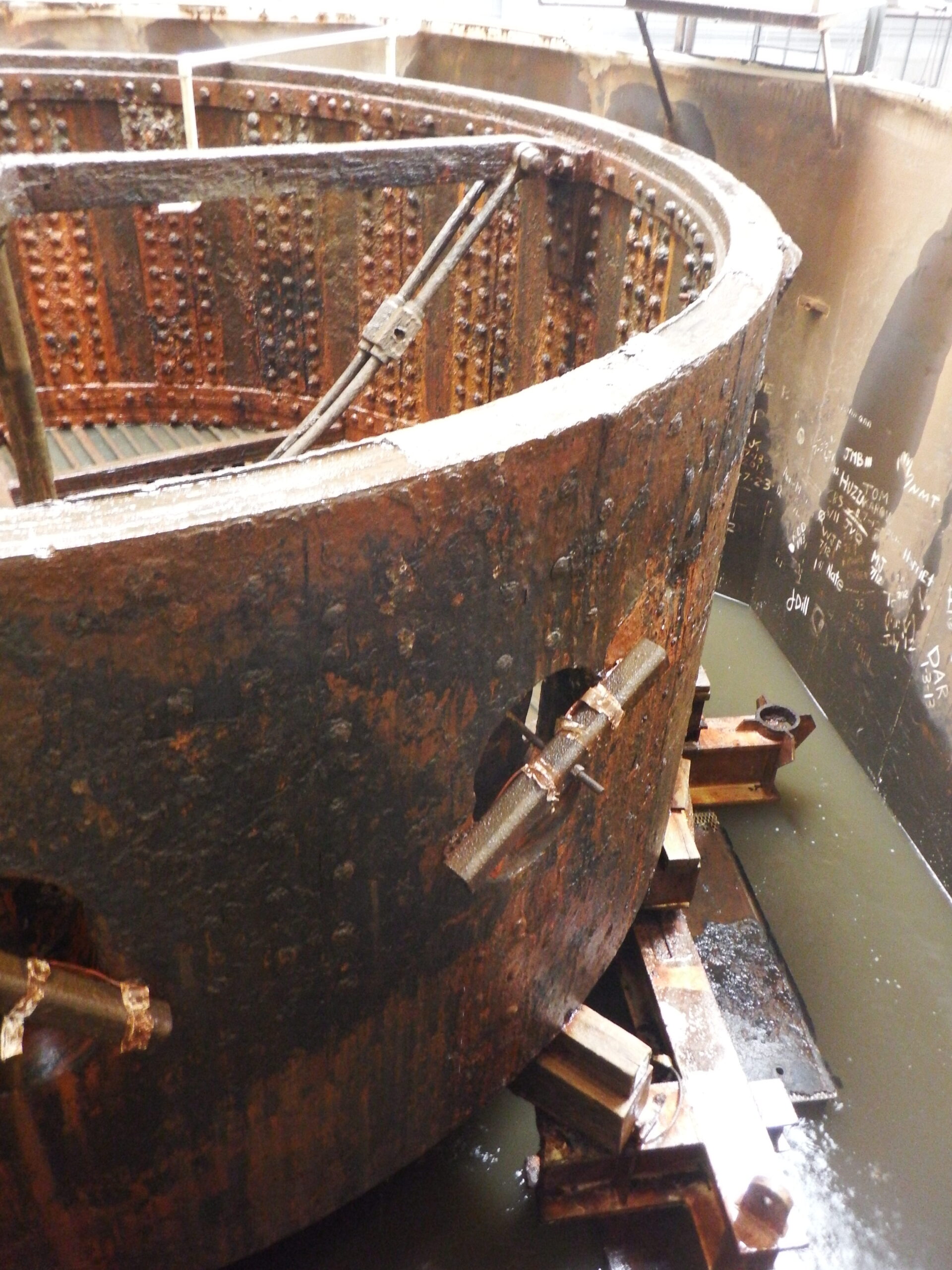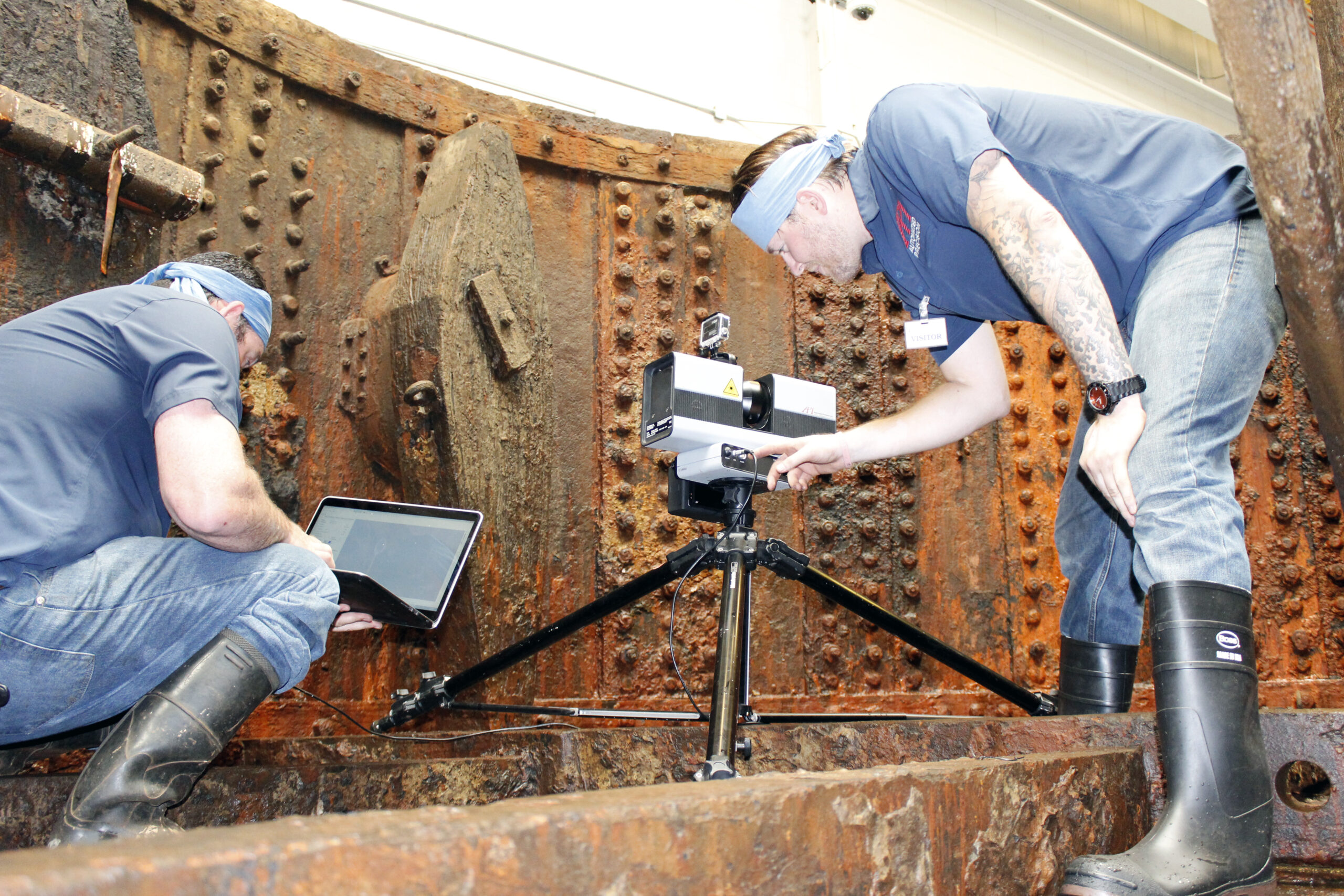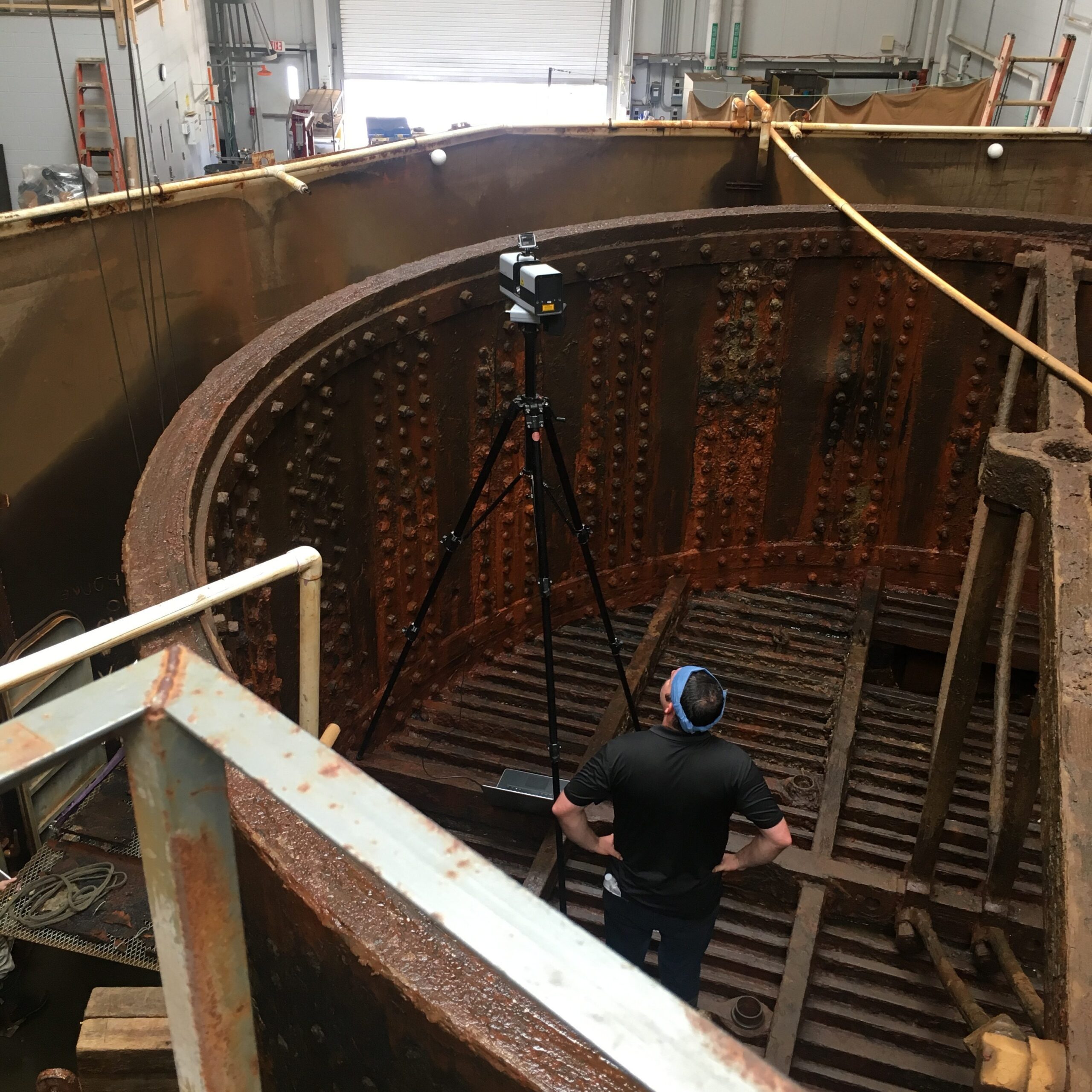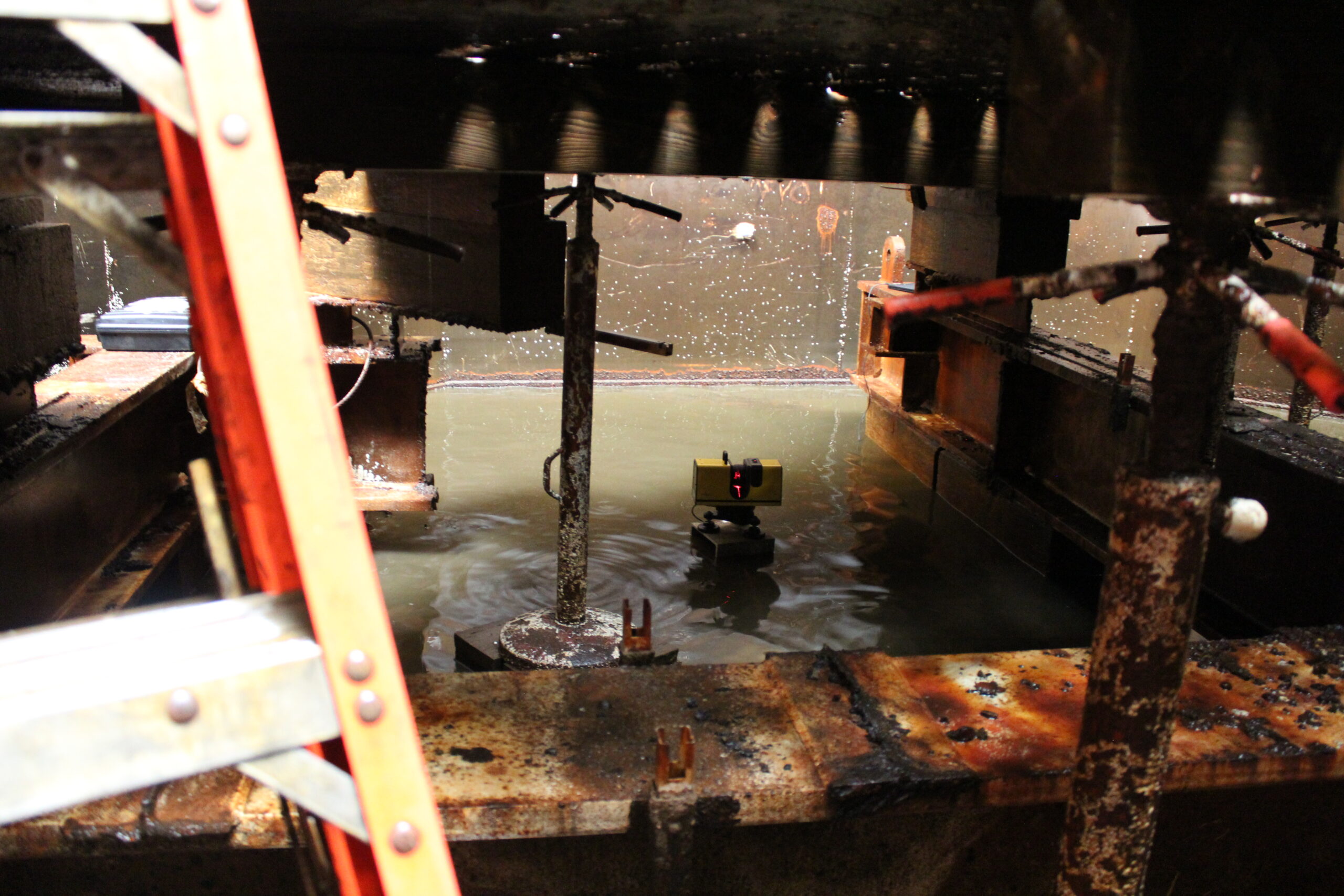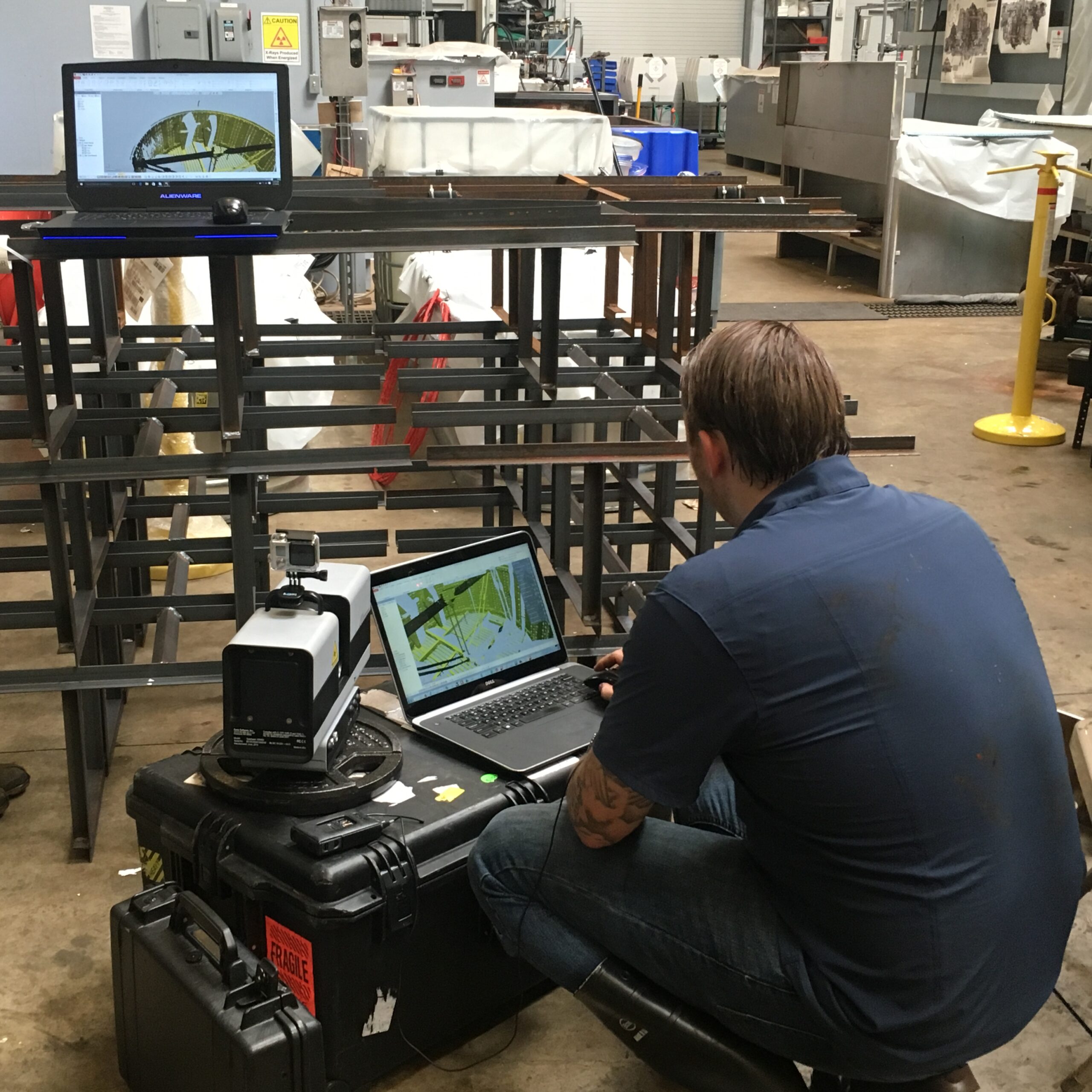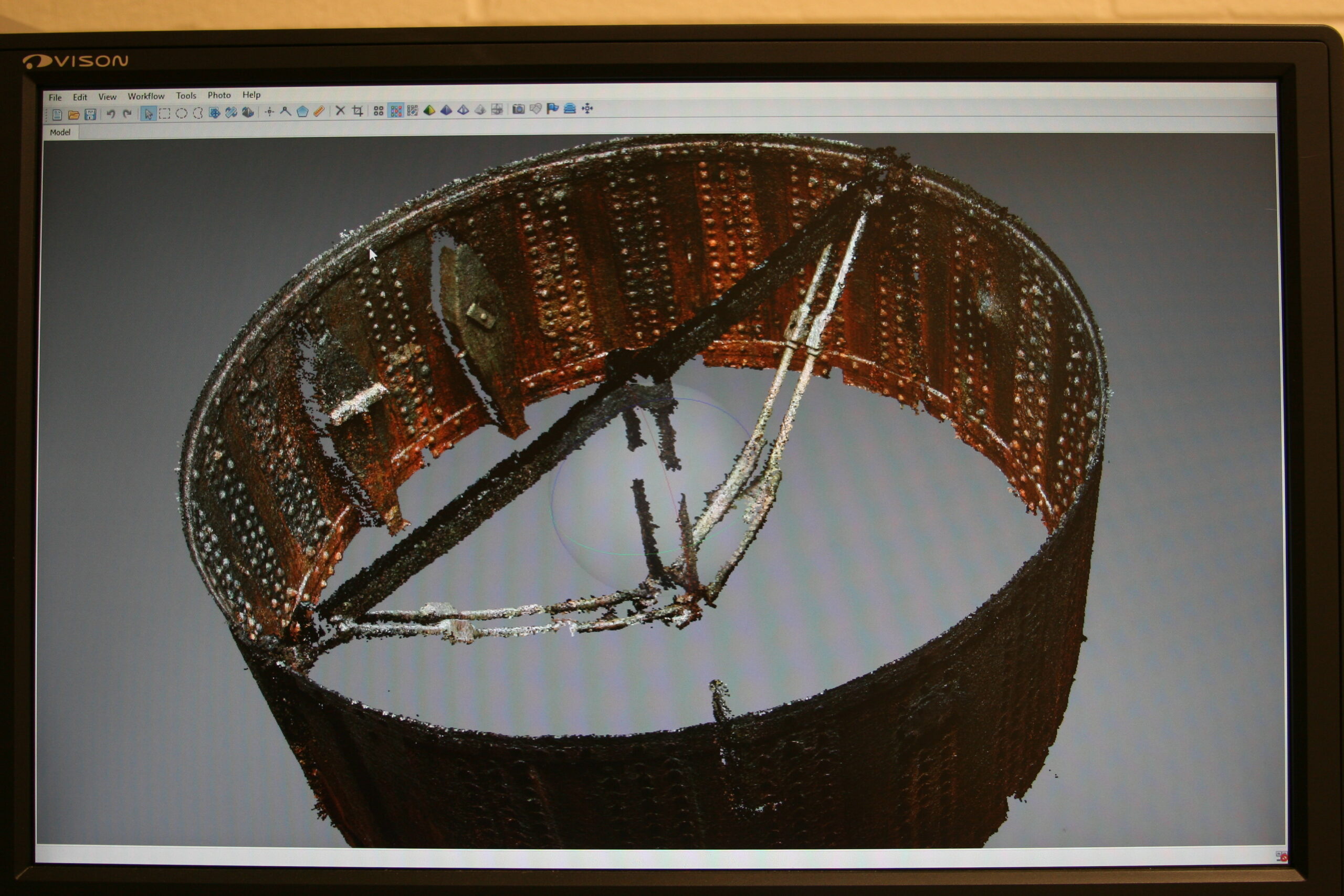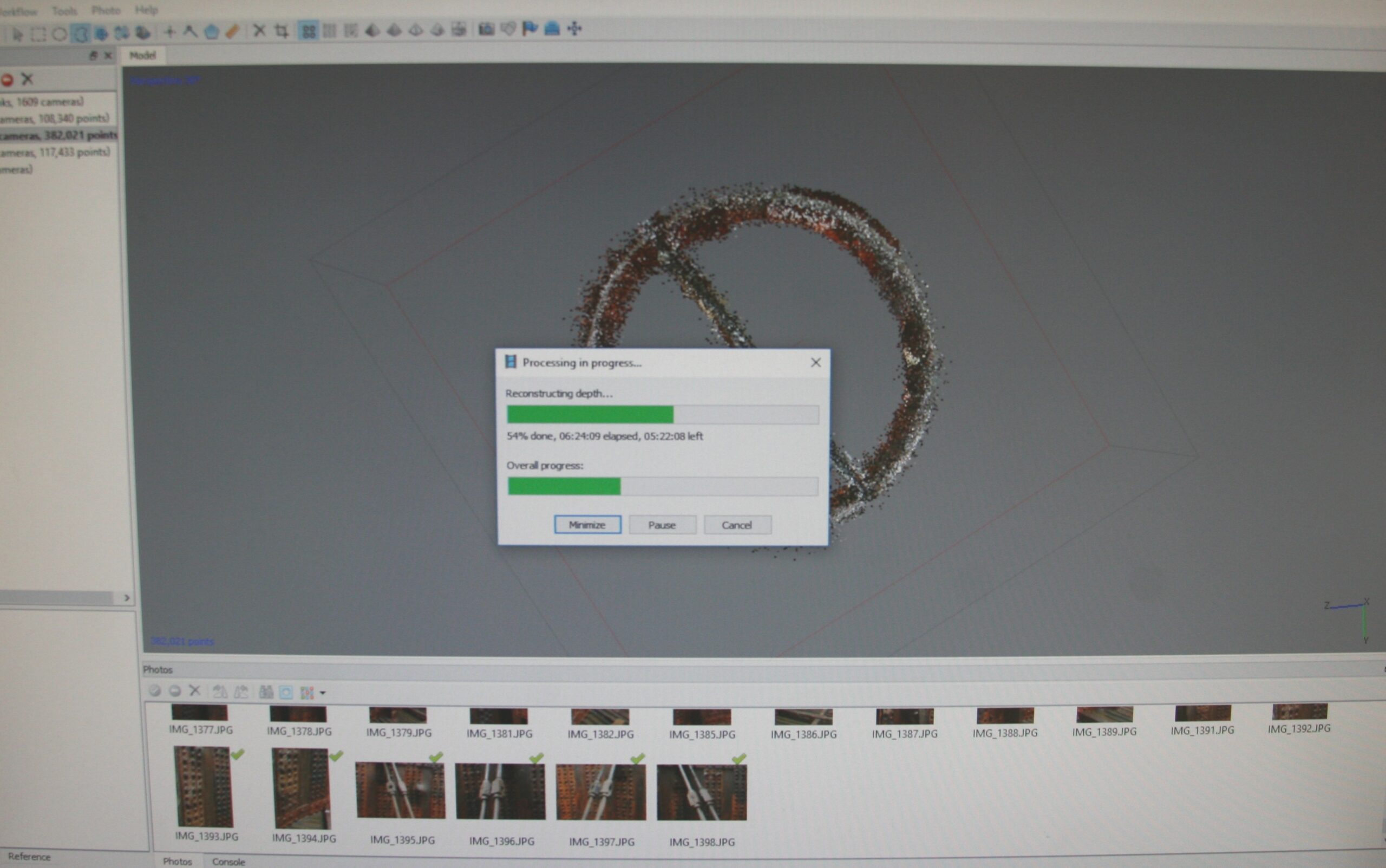It is certainly awe-inspiring to be in the turret tank. Standing within inches of the massive iron object is almost surreal when you consider that it spent 140 years at the bottom of the ocean. Every bolt, dent, ding, and hole have a story to tell. But how do you study or share those stories when the artifact spends most of its time submerged in a treatment bath?
Over the past few weeks, we have been photographing every detail of the turret in hopes to make a 3-D photo-model of the object. In total, staff and volunteers took more than 1,600 photos of the turret to try to piece together models of the interior walls, exterior walls, interior ceiling, and bottom ring.
Additionally, we were lucky enough to host individuals from API Services, right here in Newport News, who took the time to laser scan the turret for us over a 3-day period last week. Laser scanning collects data points by the thousands every few seconds, leaving a dense point cloud of data that can be turned into a highly accurate rendering of the artifacts surface. API took scans of the turret’s surfaces from different locations around and in the artifact, so you can image the millions of data points they collected.
With these two models, the staff hopes to examine the turret 365 days a year. This means that we can potentially study the diameter, depth, and volume of each cannon ball dent to better interpret what type of ordnance were used, the type of guns each shot came from, and distances and velocities for each mark on the turret walls. We can also hopefully study the turret’s construction, stanchion placement during the sinking, etc.
These models will serve as a starting point to track the ongoing conservation of the turret, too. Now that the nutguards have been completely removed, and a new anode system is being installed, we expect to see dramatic changes in the condition of the turret, especially as the object is dry-ice cleaned over the next several years. We will be able to use these models to compare the turret’s conservation in 2016 for years to come.
Maybe most importantly, we will be able to show visitors digital representations of the turret! Now it is time to crunch the data. This could take a while…
Stay tuned to see the final product!
